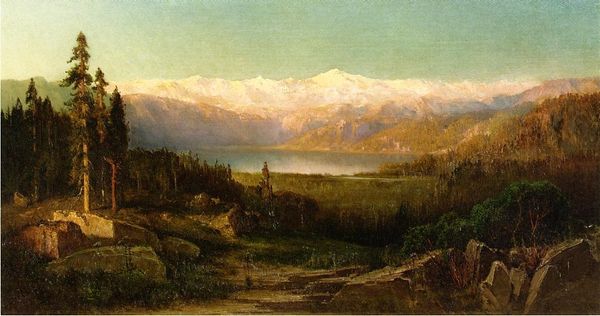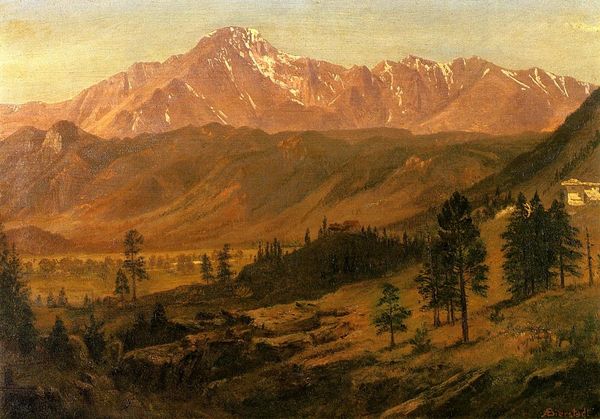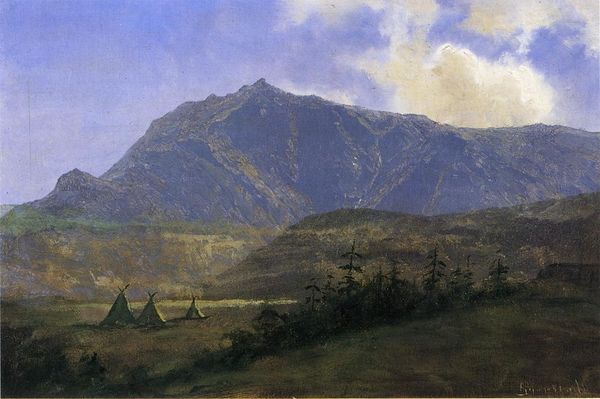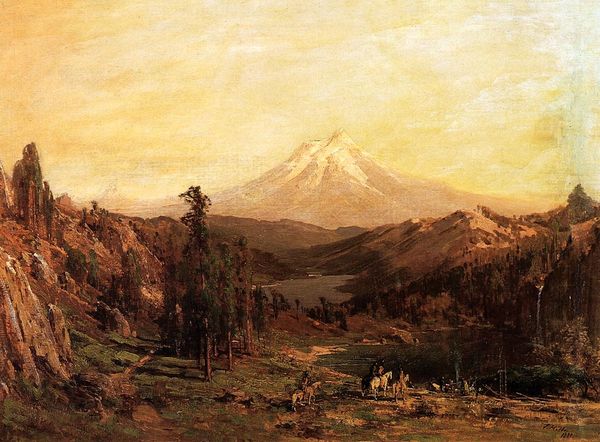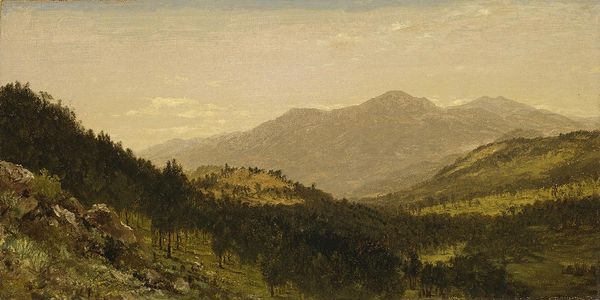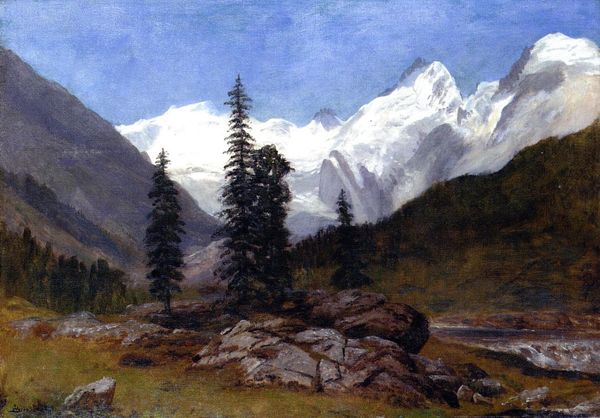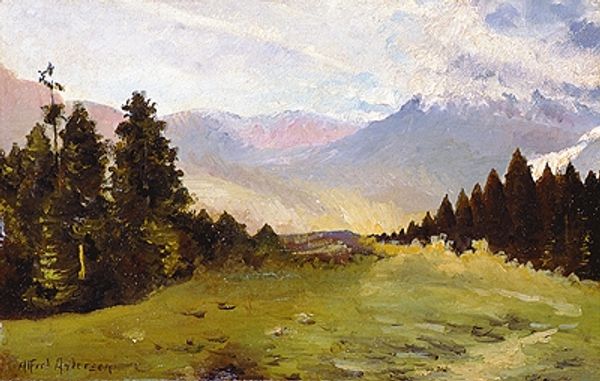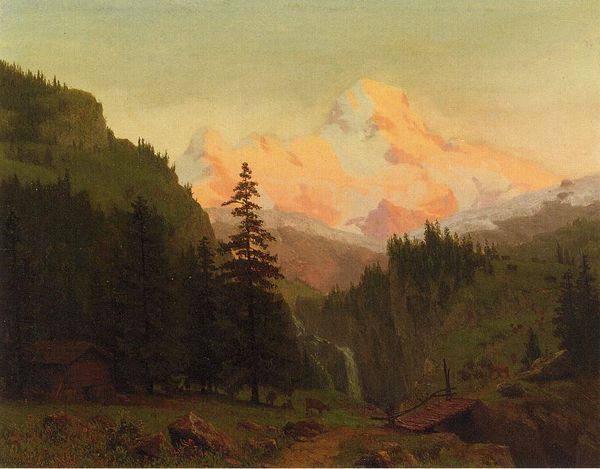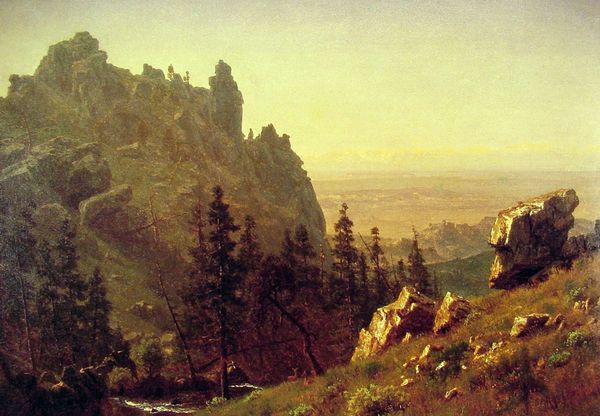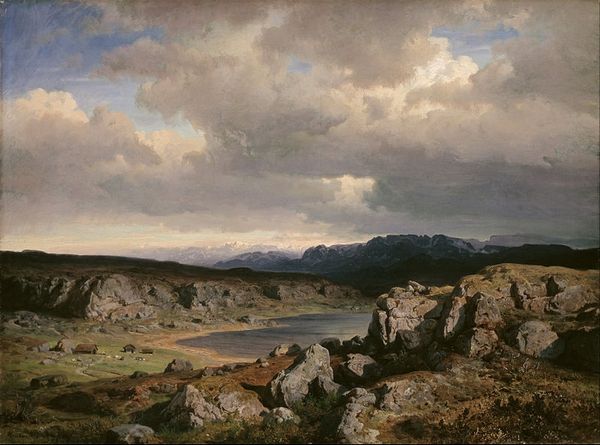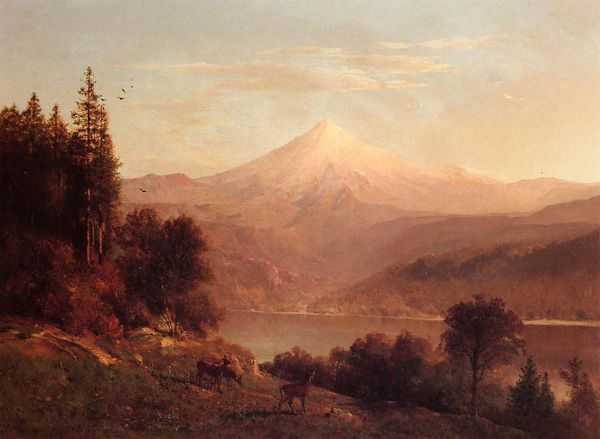
painting, plein-air, oil-paint
#
tree
#
sky
#
painting
#
plein-air
#
oil-paint
#
landscape
#
oil painting
#
forest
#
romanticism
#
mountain
#
natural-landscape
#
hudson-river-school
#
nature
Dimensions: 35.56 x 48.26 cm
Copyright: Public domain
Curator: I’m drawn to the muted color palette; it evokes a certain calmness. Editor: That’s an interesting take. Well, let’s delve in. Here we have a work entitled "In the Foothills of the Mountains" by Albert Bierstadt, notable as a practitioner of plein-air painting. It looks like oil on canvas. Curator: The sheer scale of those snow-capped peaks dwarfs the trees below. The symbolism of nature's power feels… almost cliché, but effectively conveyed. The mountains represent a timeless, untouched grandeur, wouldn’t you agree? Editor: Indeed. It appears to be natural-landscape. I am drawn to how the material processes influenced Bierstadt’s artistic choices. The choice of oil paint facilitates blending of tones and layering, that adds to depth of field that makes you look from the front toward to horizon of the painting. Think about what "plein-air" entailed; pigments ground with oil, canvas stretched taught, and then, outside—exposed to weather, insects, the very environment that would then be captured on that canvas. Curator: The forest as a representation of wilderness. This image harkens back to archetypal imagery. I see hints of Romanticism and the Hudson River School, which spoke to ideas of American expansion, God's promise. What thoughts does it bring you to think of Bierstadt’s landscapes as commodities in an expanding 19th-century American marketplace? Editor: Exactly! Bierstadt found great wealth, not so much in painting these sceneries than commoditizing and selling. We ought to ask what labor produced the raw material—the paint—and canvas. Were enslaved or exploited people anywhere in that chain? Then how was the painting, ultimately, consumed? By whom, where, and for what ends? All of these influence and change our impression about the images as such. Curator: So true. Editor: Understanding the material conditions that birthed the work is invaluable for its interpretation. Curator: It gives the symbolic analysis so much richer layers. It's about both cultural perception, how landscape gains meaning as raw commodity. Editor: Ultimately, Bierstadt offers not just a picturesque landscape, but a view into the intersection of nature, industry, and social narratives during his time. Curator: Well said! This painting clearly deserves a deep look!
Comments
No comments
Be the first to comment and join the conversation on the ultimate creative platform.
